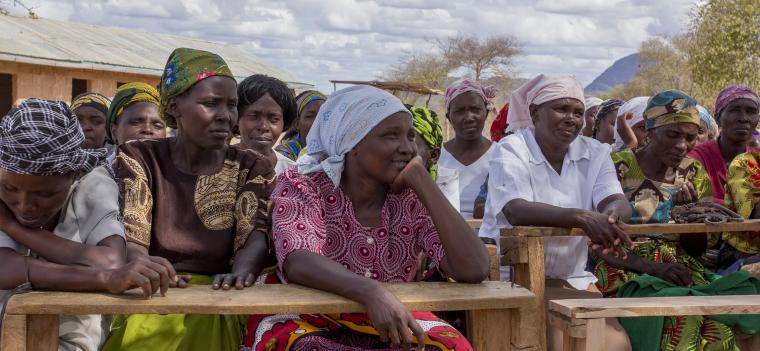News
- ESMAP’s work in off-grid electrification in Kenya gets off the ground with a new $150 million World Bank investment project.
- The project will provide electricity to 1.3 million people in 14 rural counties through mini grids, individual solar systems and cookstoves.
- ESMAP’s spurred the dialogue on mini grids in the country and developed a geospatial plan to identify least cost options for off grid electrification in these communities.
ESMAP’s comprehensive support to Kenya has resulted in the development of a recent $150 million World Bank project to help remote Kenyan communities far from the country’s main grid to access electricity.
Kenya has emerged as a regional star in achieving progress on electrification, growing from 23% in 2009 to about 50% in 2016, underpinned by huge investments in the sector.
While the country has had a long, successful history in off-grid electrification, highly remote areas – especially in the Northern part of the country - are still underserved. As part of the North and Northeastern Development Initiative (NEDI), the government is committed to support the economic development of these communities through transformative coordinated infrastructure investments in energy, transport, livestock, and water.
The World Bank energy project - Kenya Off-grid Solar Access Project for Underserved Counties - will help the country to increase access to modern energy in 14 remote communities in its north and northeastern parts through off grid solutions, mini grids and cookstoves. It will serve an estimated 1.3 million people in 277,000 households in these counties, reaching homes, schools, and health centers.
ESMAP has been integral to the World Bank engagement in Kenya. Its support has influenced the emerging policy consensus on mini grids as a least cost off-grid electricity option and has helped the government rollout an electrification plan, targeting the poorest, most marginalized counties.
|
An event in Nairobi on upscaling mini-grids co organized with the Climate Investment Funds (CIF) brought together for the first time more than 200 representatives from 29 countries to discuss ways to scale up mini grids in their countries. Discussions during the event improved the understanding of the role of mini grids in national electrification plans, and helped inform a $40 million mini grid component in the World Bank project.
An electrification plan was also developed with ESMAP’s assistance to identify least cost options (grid extension, mini grids or stand-alone systems) for electricity access in remote communities. It uses a newly created GIS-based spatial least-cost electrification database that assesses grid and off grid options.
The approach was extended to mini grids allowing the Bank and Kenya to design a pipeline of 120 mini grid projects.
ESMAP complemented this database with data on electricity demand and consumption patterns among different consumer groups to help inform policy decisions. This data was gathered as part of ESMAP’s Multi-Tier Framework Survey recently launched in Kenya to estimate the quality of energy access nationally.
ESMAP has been providing comprehensive support to Kenya to reach universal electricity access. In the past, ESMAP helped bring electricity to Kenya’s poor populations living in urban slums. Through analytical work and technical assistance, ESMAP supported power companies in their efforts to engage with communities and understand their needs and build trust. This work was part of a larger $330 million World Bank energy project to strengthen the capacity of Kenya Power expand and modernize its services. The ESMAP support has helped project go from 5,000 to more than 100,000 connections in one year.
